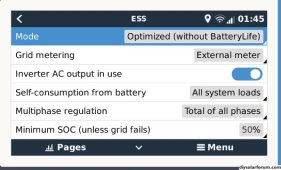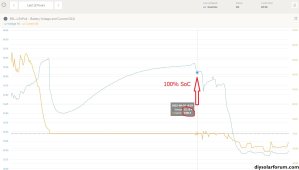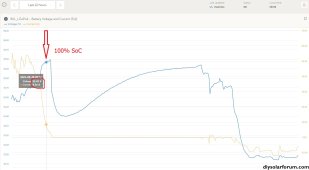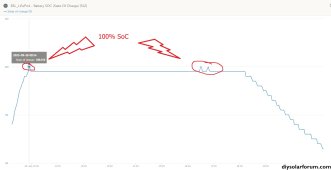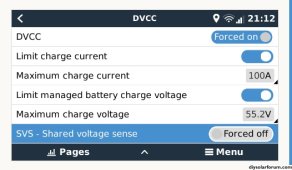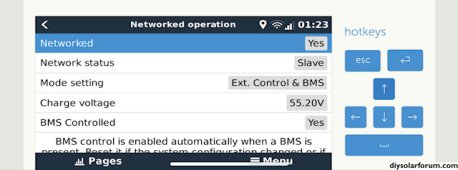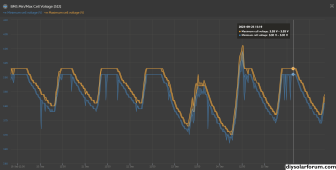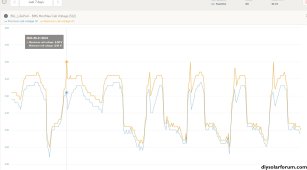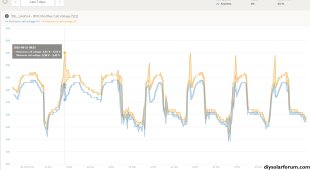Snapperhead
New Member
Hi Solar experts..... I need some fresh perspective on why a battery refuses to show 100% SoC even under the most favourable conditions.
First a little about the setup in question..... Two(2) parallel LiFePo4 48v 5.12kWh 100Ah BSL racks (via CAN-Bus) fed by Victron MPPT 450/100 TR (via VE.Direct) into a Multiplus II 8K/110 230v monitored by a Cerbo GX (via VE.Bus) using a Victron ET112 Energy Meter between Grid and the MCB. Batteries have their own BMS as shown in the Pics with current BMS config.
In an attempt to be kind to the battery cells and achieve 100% SoC (obviously without a float period due to the ESS setup) BMS Config (pack full charge voltage) was modified to reflect 55.2v in the Cerbo GX. As shown in the VRM graph's .... this didn't achieve anything either.
I've attached pics of the BMS Settings and VRM Details also.
Looking for info / education on where and how the 100% SoC is achieved, what conditions need to be met before it is achieved, and how and where it is reported.
I'm assuming that this ESS setup has a lot to do with the current SoC dilemma but am unsure of how to achieve 100% for any meaningful length of time. My aim is to be able to properly manage other parameters that will only come into effect once 100% SoC has been achieved.
Cheers ?
First a little about the setup in question..... Two(2) parallel LiFePo4 48v 5.12kWh 100Ah BSL racks (via CAN-Bus) fed by Victron MPPT 450/100 TR (via VE.Direct) into a Multiplus II 8K/110 230v monitored by a Cerbo GX (via VE.Bus) using a Victron ET112 Energy Meter between Grid and the MCB. Batteries have their own BMS as shown in the Pics with current BMS config.
In an attempt to be kind to the battery cells and achieve 100% SoC (obviously without a float period due to the ESS setup) BMS Config (pack full charge voltage) was modified to reflect 55.2v in the Cerbo GX. As shown in the VRM graph's .... this didn't achieve anything either.
I've attached pics of the BMS Settings and VRM Details also.
Looking for info / education on where and how the 100% SoC is achieved, what conditions need to be met before it is achieved, and how and where it is reported.
I'm assuming that this ESS setup has a lot to do with the current SoC dilemma but am unsure of how to achieve 100% for any meaningful length of time. My aim is to be able to properly manage other parameters that will only come into effect once 100% SoC has been achieved.
Cheers ?




